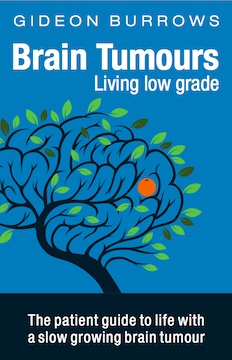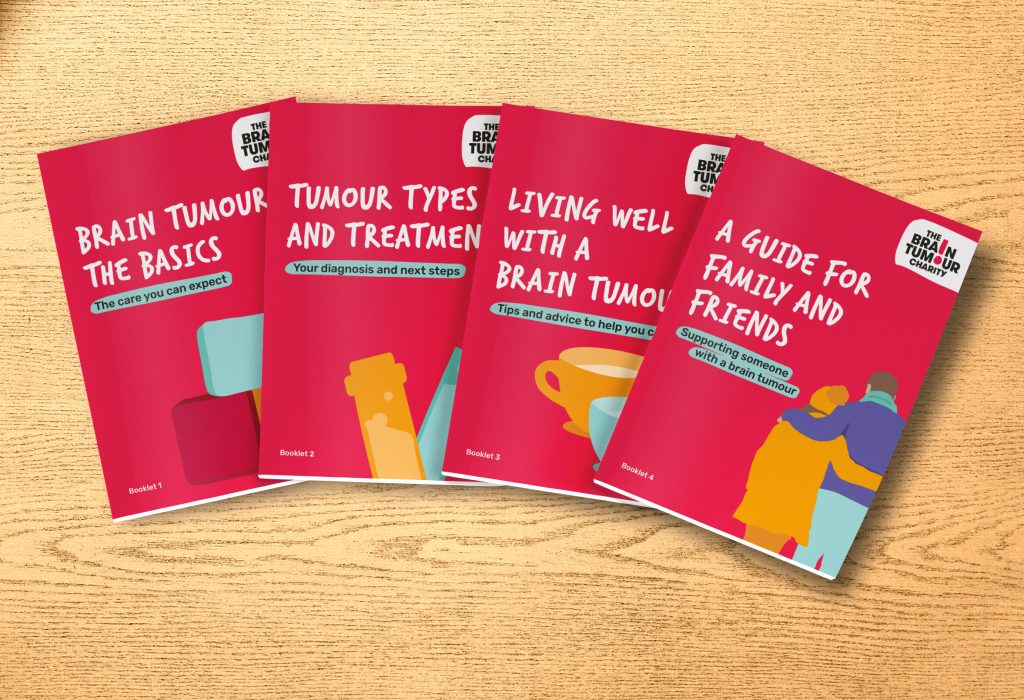Low grade brain tumours
Low grade brain tumours are grade 1 or grade 2 tumours and are sometimes called benign brain tumours. They are usually slow growing and unlikely to spread. But, they can still be serious.
On this page, we’ll cover:
- What is a low grade brain tumour?
- Is a low grade tumour the same as a benign brain tumour?
- Symptoms of a low grade brain tumour
- Treatment of a low grade brain tumour
- Living with a low grade tumour
What is a low grade brain tumour?
The World Health Organisation (WHO) grades tumours from 1 to 4 based on how they are likely to act.
Low grade brain tumours are classified as grade 1 or 2 and they are:
- slow growing
- relatively contained, usually with well-defined edges
- unlikely to spread to other parts of the brain
- have less chance of returning if they can be completely removed by surgery
- are sometimes still referred to as ‘benign’.
Is a low grade tumour the same as a benign brain tumour?
Low grade tumours are sometimes called benign brain tumours. But, the term ‘benign brain tumour’ is used less frequently nowadays as it can be misleading.
Although low grade brain tumours grow more slowly than high grade tumours, they can still be serious.
This is because the tumour can cause harm by pressing on and damaging nearby areas of the brain, due to the limited space capacity of the skull. They can also block the flow of the cerebrospinal fluid (CSF) that nourishes and protects the brain, causing a build-up of pressure on the brain.
Symptoms of a low grade brain tumour
Symptoms of a low grade brain tumour depend on the type of tumour, its size, and its location in the brain. Also, because everyone is different, symptoms can differ from person to person.
With that in mind, symptoms of a low grade tumour might include:
- New headaches that keep happening
- Seizures
- Feeling nauseous or being sick
- Dizziness
- Problems with your vision
- Loss of taste or smell
How are low grade brain tumours treated?
Several factors influence the decision as to which treatment will best help you.
A team of specialised health professionals will consider your individual diagnosis and take account of factors, such as the size and location of the tumour, the type of tumour you have and how quickly it is growing. They will also consider your age and general health.
Standard treatments for low grade brain tumours include:
-
You may undergo surgery for a variety of reasons such as:
- whole or partial removal of your tumour (craniotomy)
- diagnosis of tumour type (biopsy)
- as part of chemotherapy treatment
- or for reducing associated conditions, such as hydrocephalus, by putting in a shunt.
Whenever possible, your neurosurgeon will try to remove all of your tumour, or as much as is safe to.
It is important to know that neurosurgery is not always possible. If your brain tumour is too close to an important part of the brain, surgery may be too risky. In this case, another treatment option will be suggested.
-
For some low grade, slow-growing tumours that are unlikely to spread, a watch and wait approach may be used.
This is more accurately described as the active monitoring of your condition, without giving any immediate treatment, unless your symptoms develop, or worsen, or your scan changes.
Watch and wait is also sometimes used after initial treatment, such as biopsy or debulking surgery, where part of the tumour is removed, before giving other treatments that could cause worse side-effects.
The most common types of brain tumours to receive a watch and wait approach are newly diagnosed low grade gliomas (grade one or two astrocytomas, grade two oligodendrogliomas) and grade one meningiomas.
Living with a low grade brain tumour
A brain tumour diagnosis can be devastating. It can be very difficult to accept and can change your life in many ways. It can have a significant impact on your social, physical, functional and emotional well-being.
However, there are ways to cope. Below we have some strategies on living with a low grade brain tumour.
-
Brain tumours may cause effects that can have an impact on your quality of life. They can affect different parts of the brain which control different functions. This means that the effects of a brain tumour you may experience depends on the location, its size and its aggressiveness.
Find out more information about the common side-effects of a brain tumour and discover some of the strategies our community has found useful to cope with them.
-
If you have a low grade brain tumour, it is likely that in the eyes of the law you are considered to have a disability, even though you may not see yourself that way.
This can have implications on your day-to-day life and leave you with questions like:
- Can I drive with a brain tumour?
- What about my job… can I still work?
- Can I get health insurance?
- I’m struggling financially, am I entitled to any government benefits?
Support and Information Services
Research & Clinical Trials Information
You can also join our active online community.
In this section

Get support
If you need someone to talk to or advice on where to get help, our Support and Information team is available by phone, email or live-chat.
Recommended reading
Share your experiences and help create change
By taking part in our Improving Brain Tumour Care surveys and sharing your experiences, you can help us improve treatment and care for everyone affected by a brain tumour.

Brain Tumours: Living Low Grade by Gideon Burrows
The patient guide to living with a slow growing tumour. Read more about his experiences and those of many others as they came to understand their diagnosis and learned how to live low grade.
